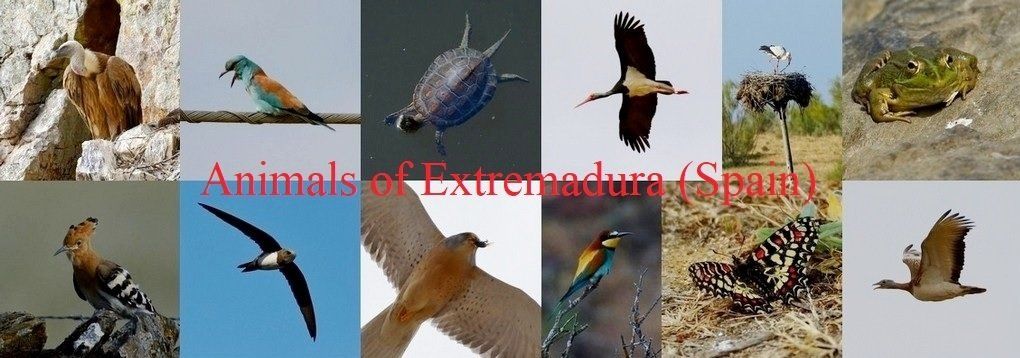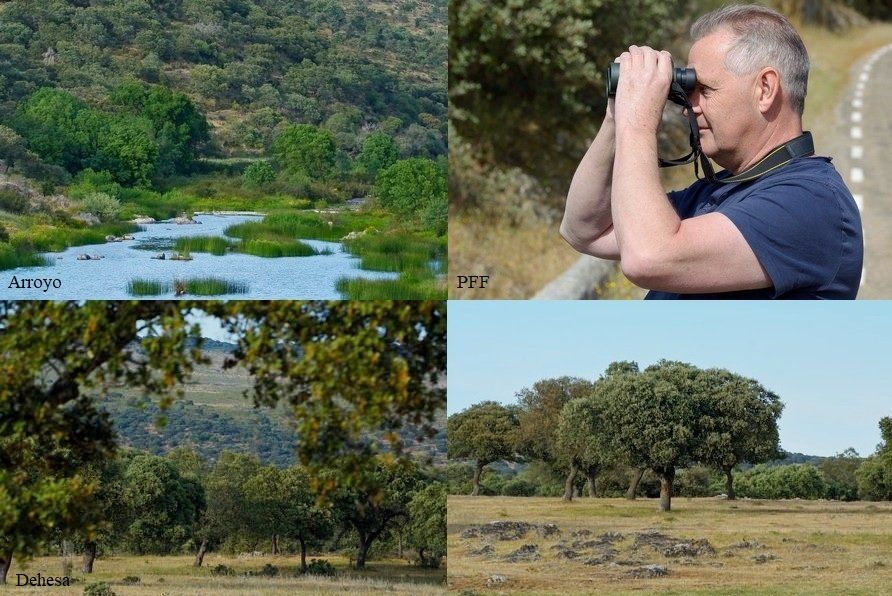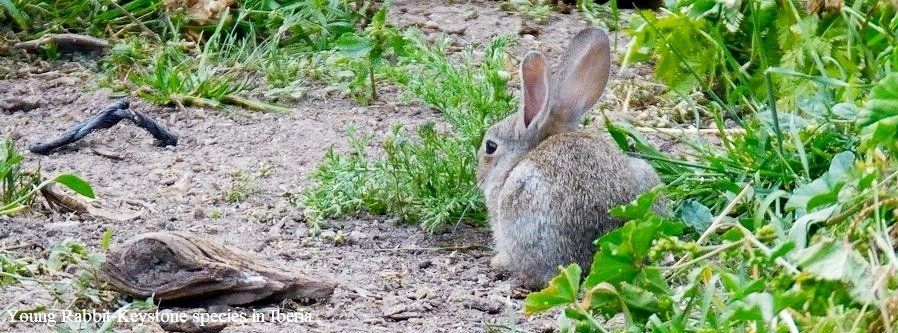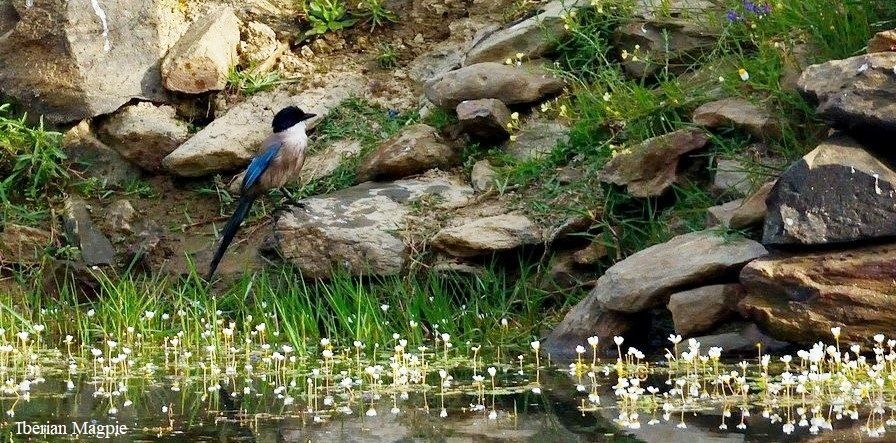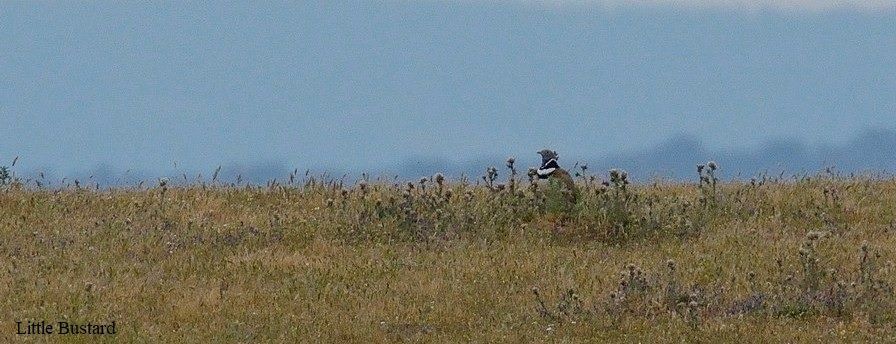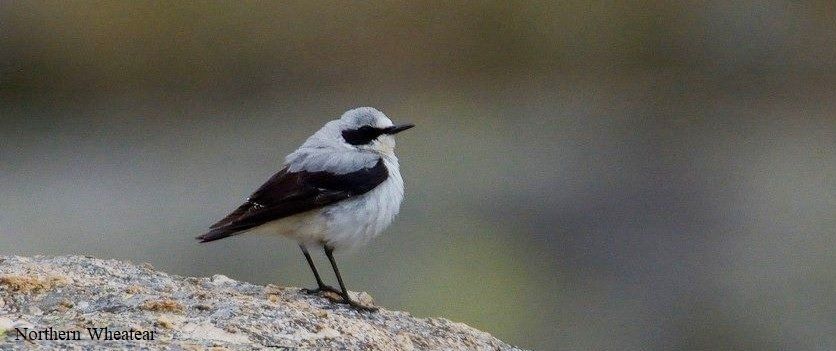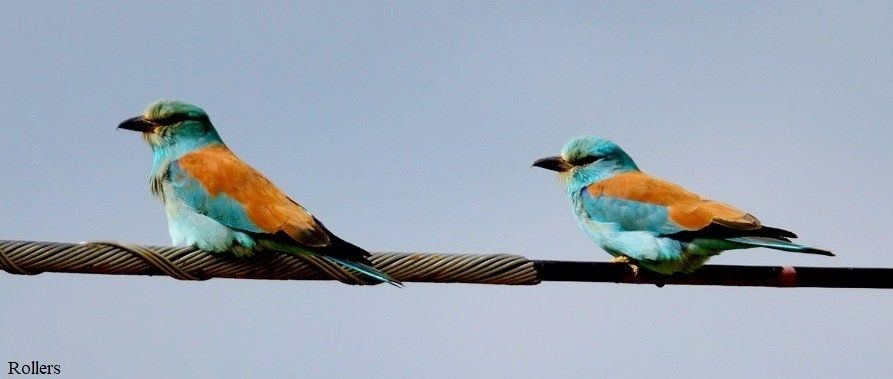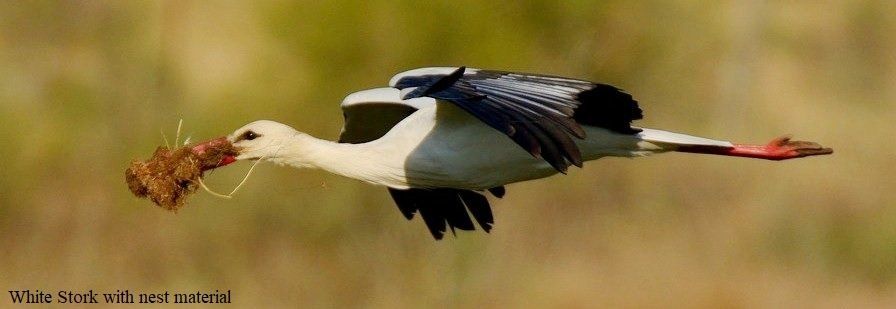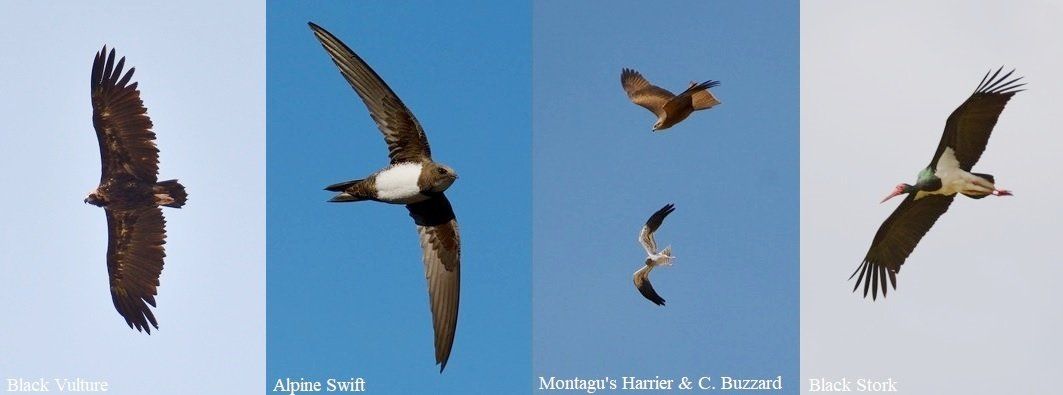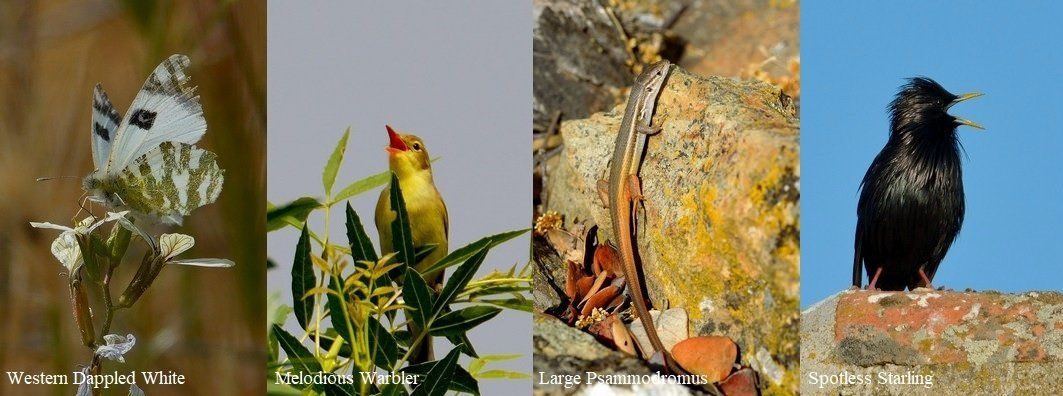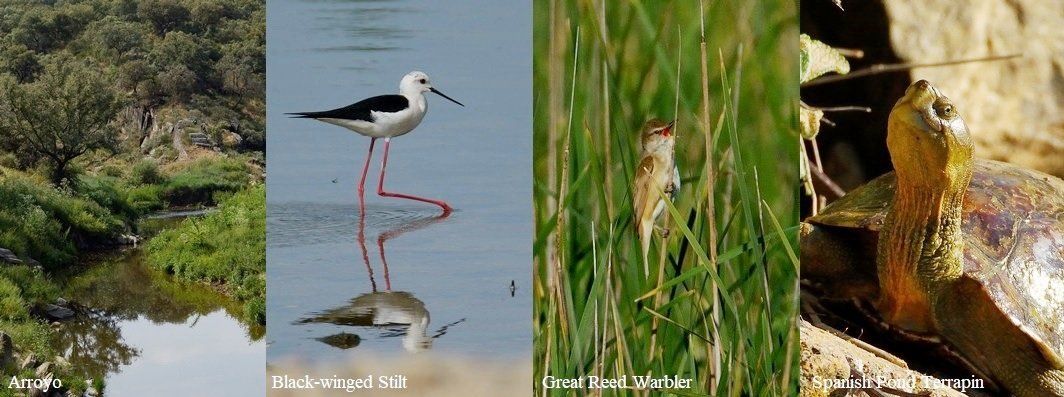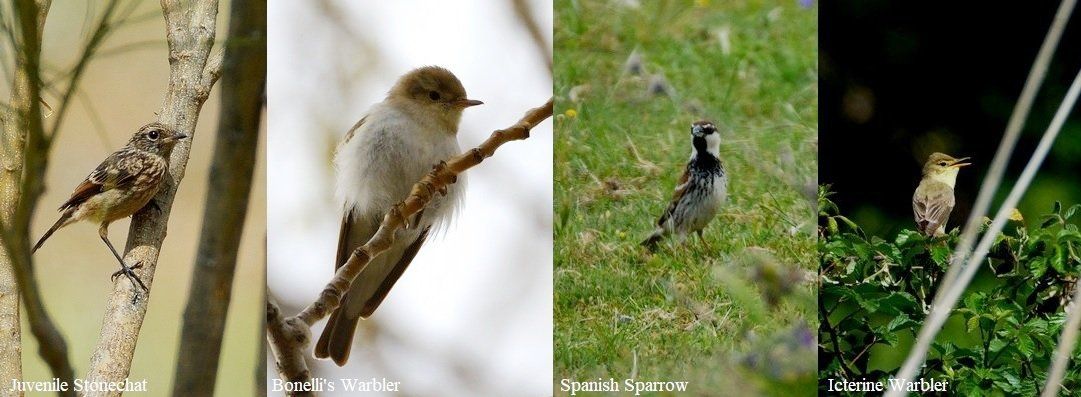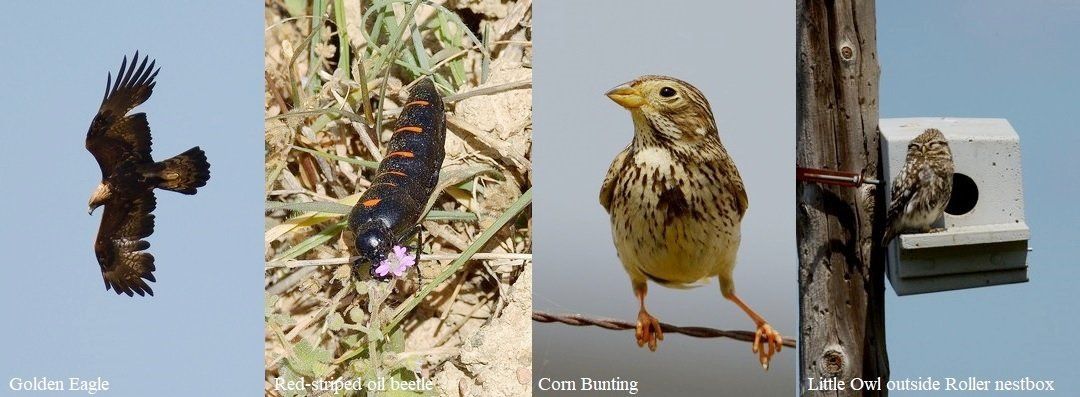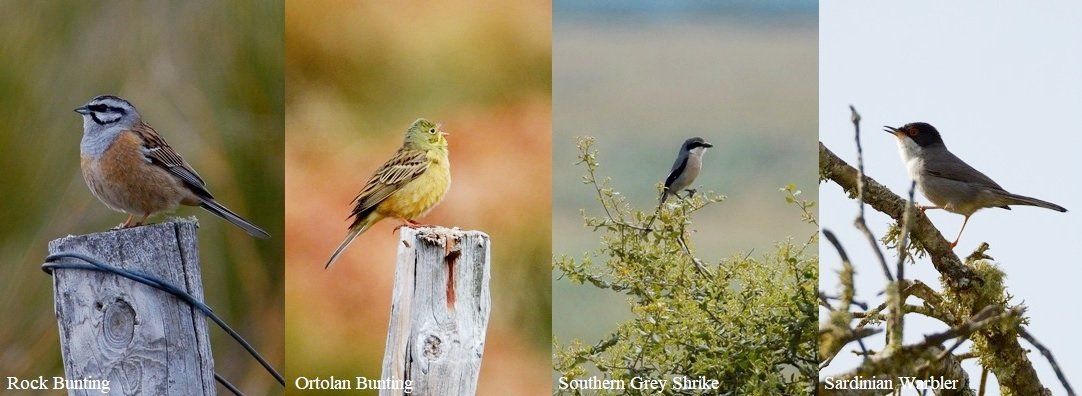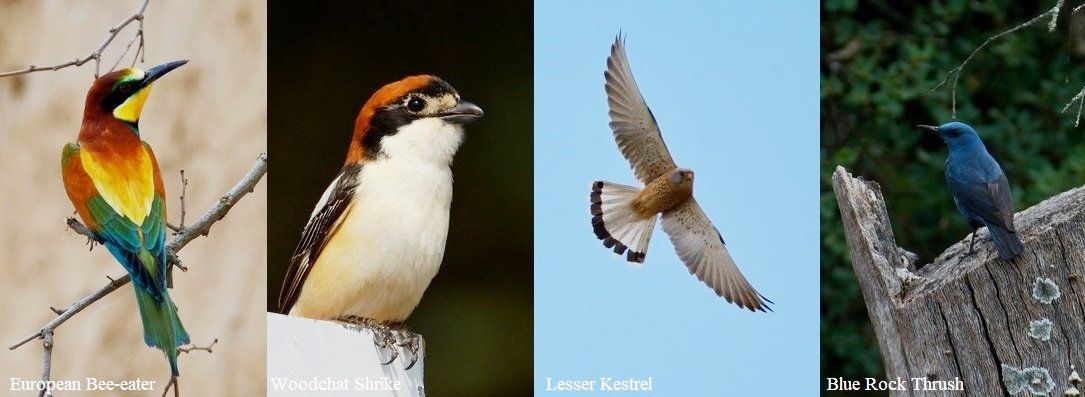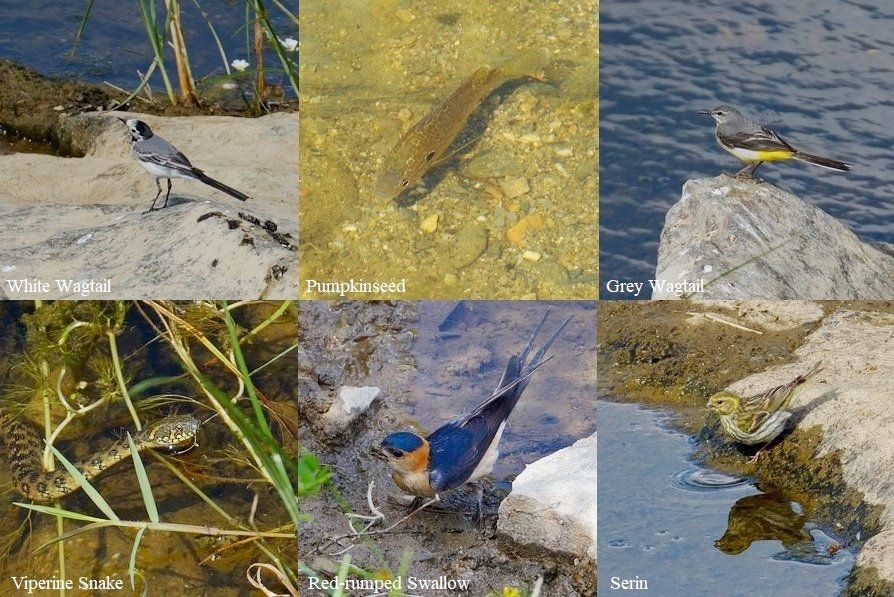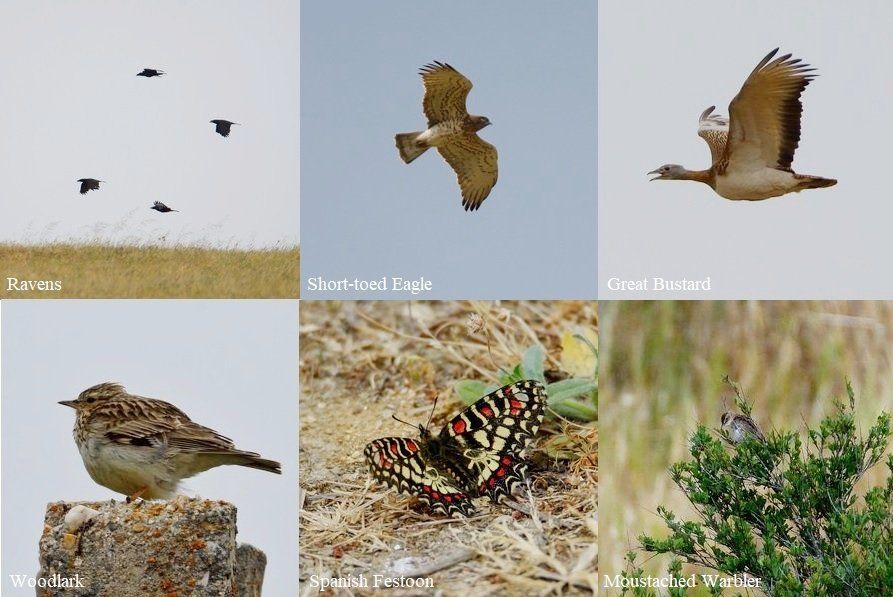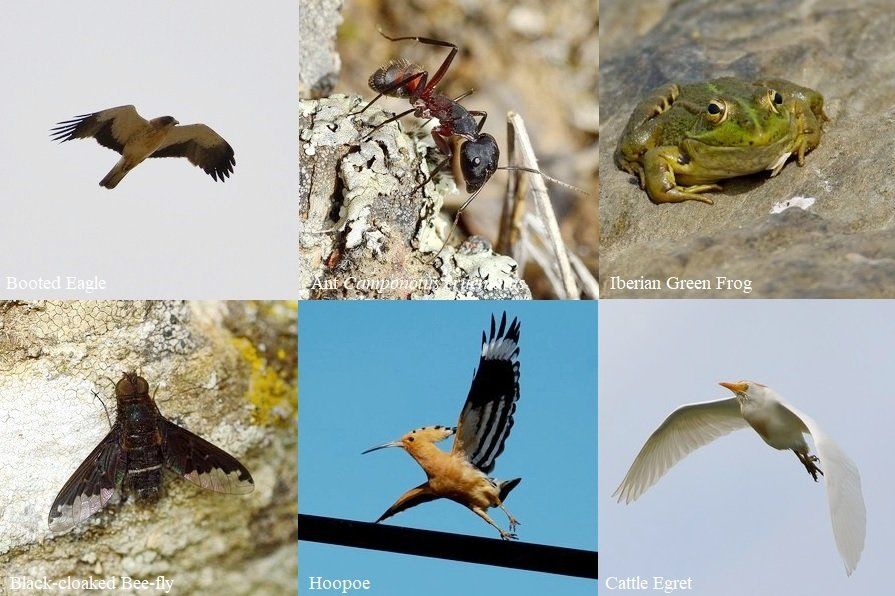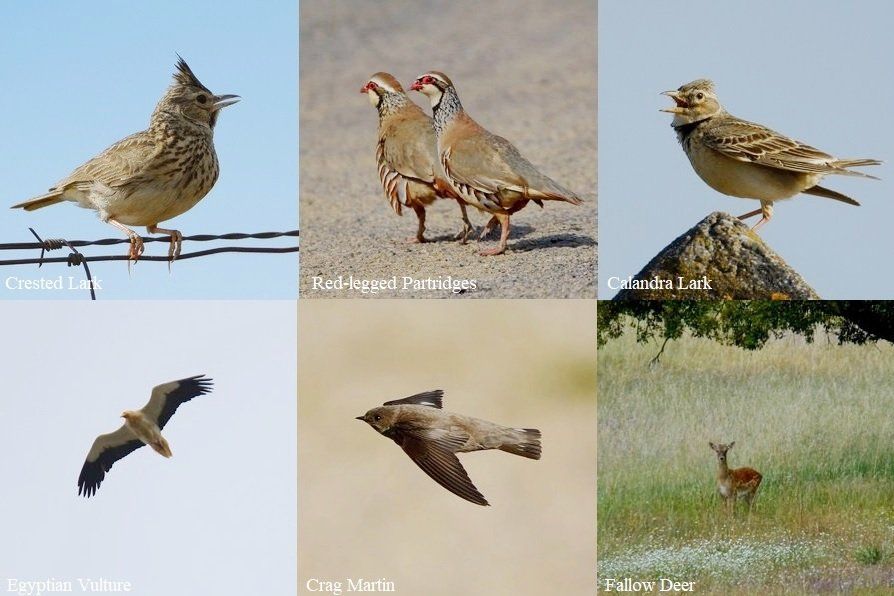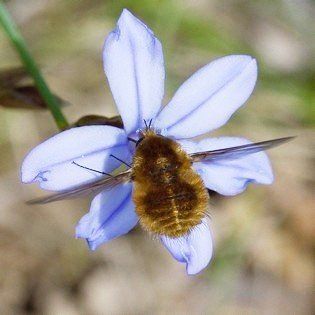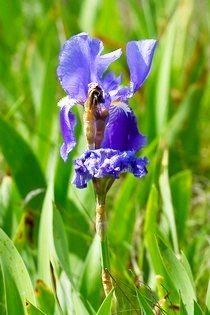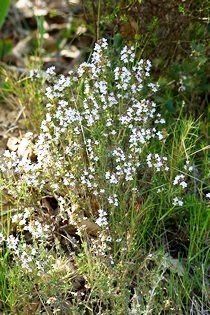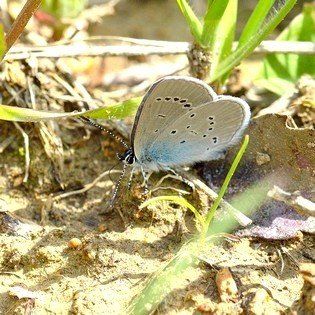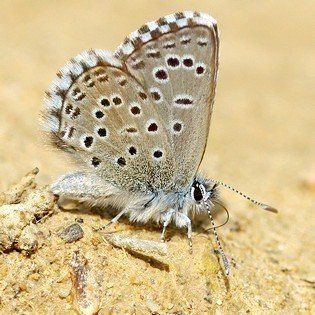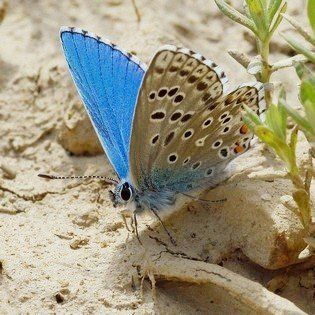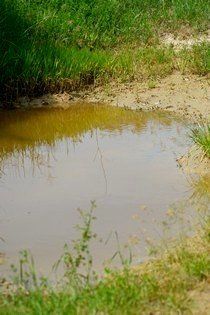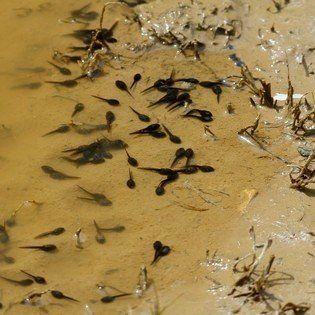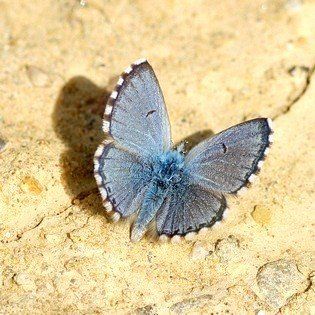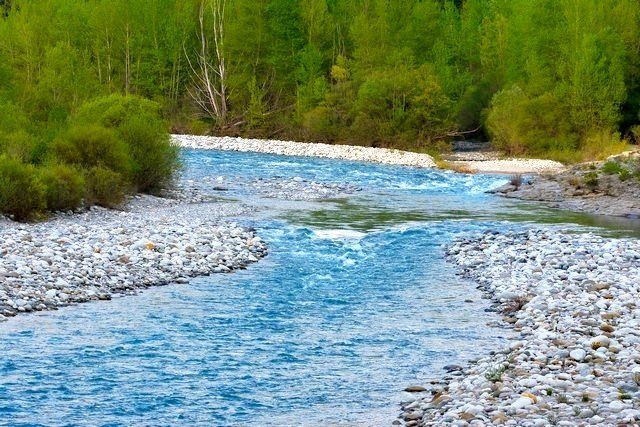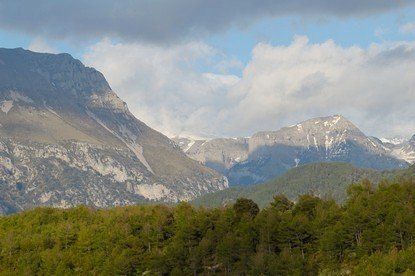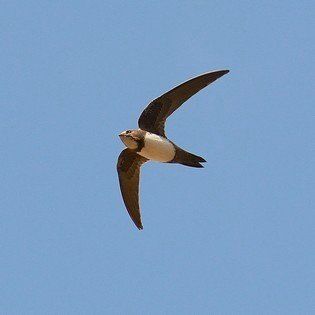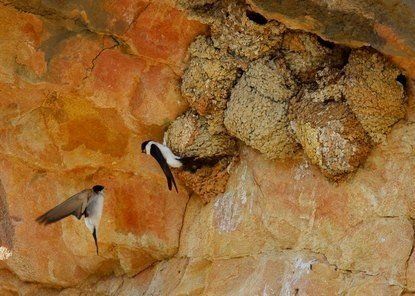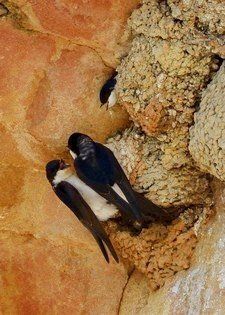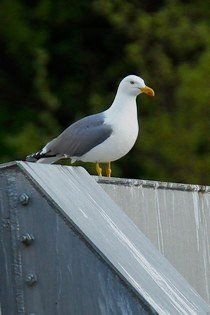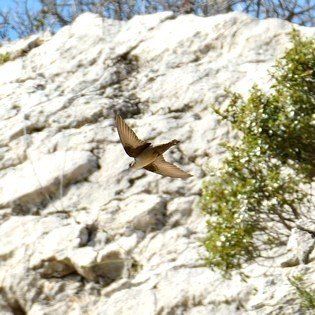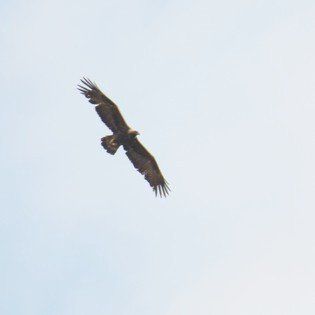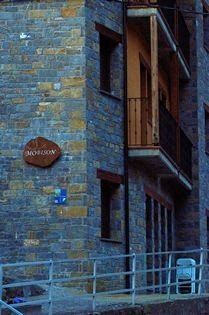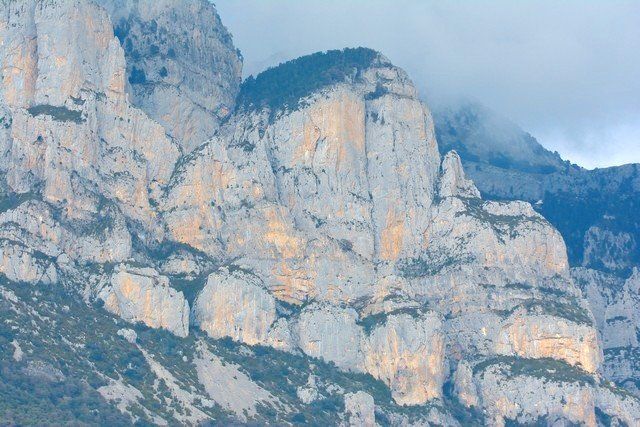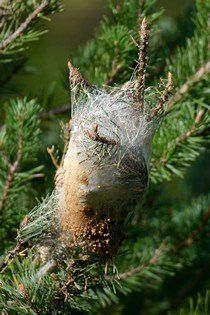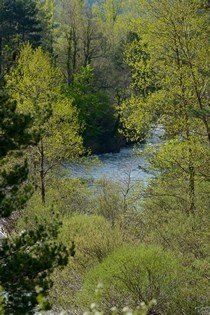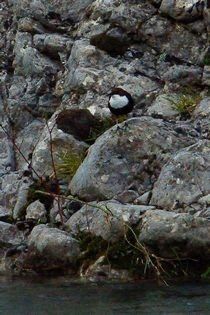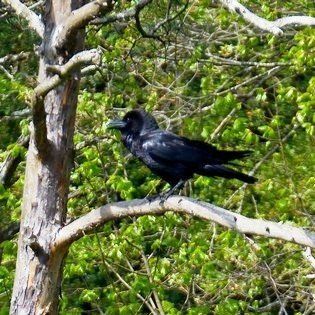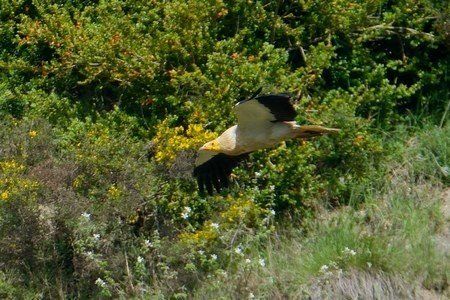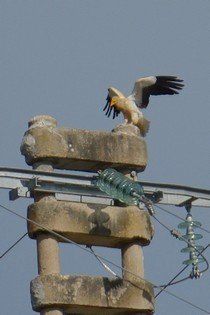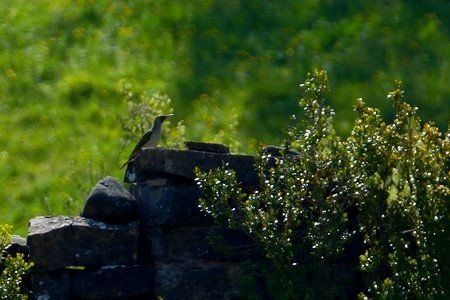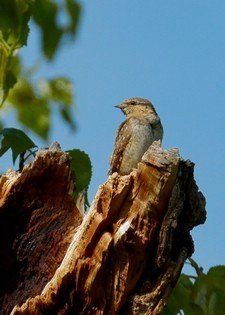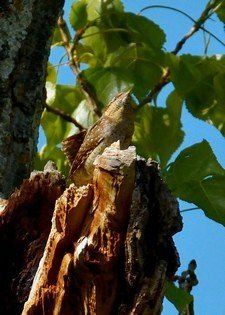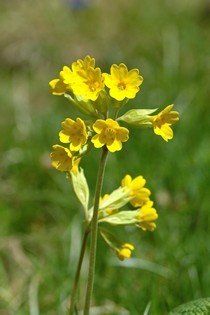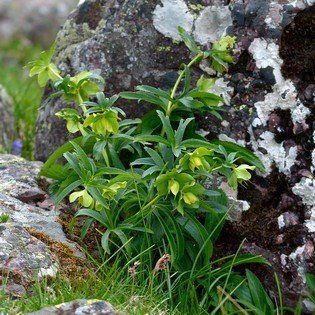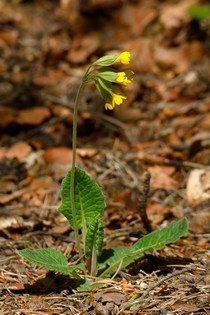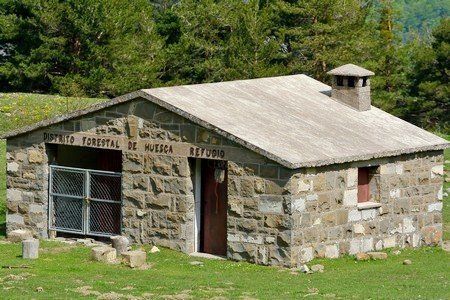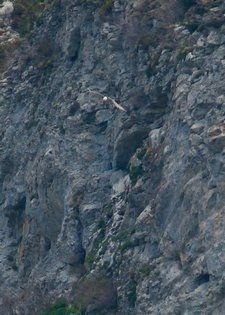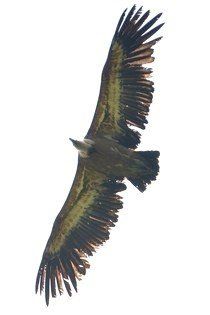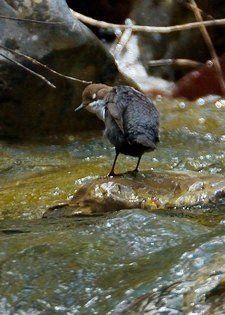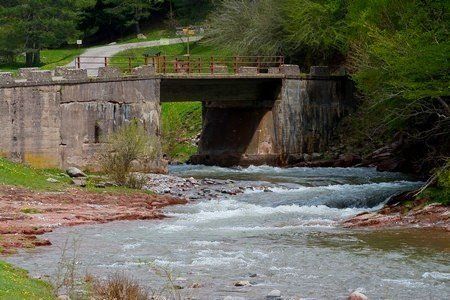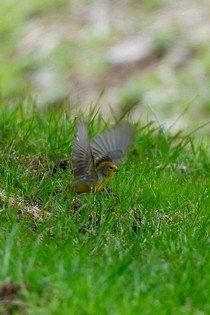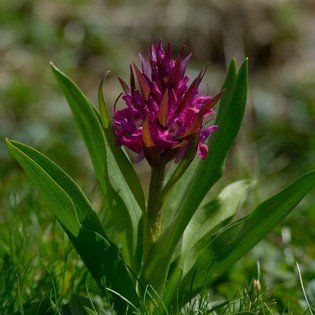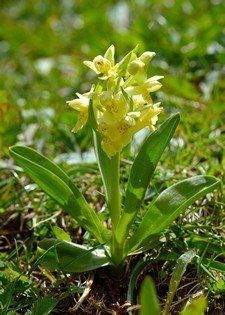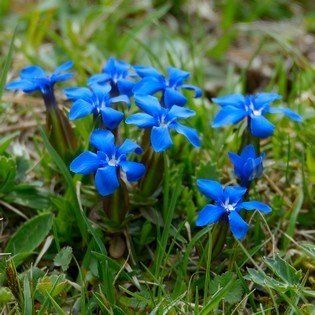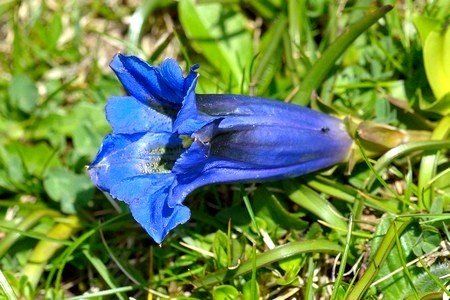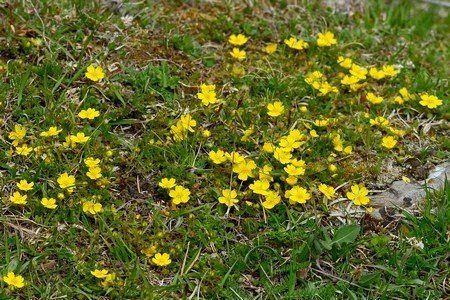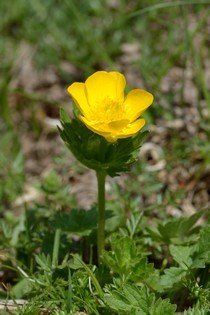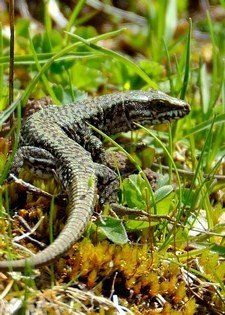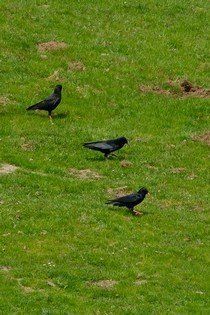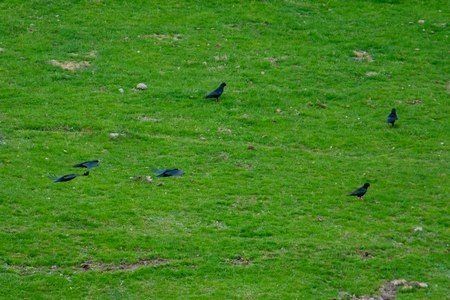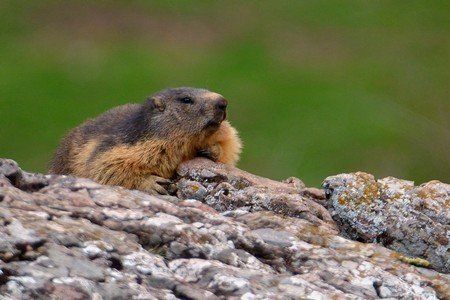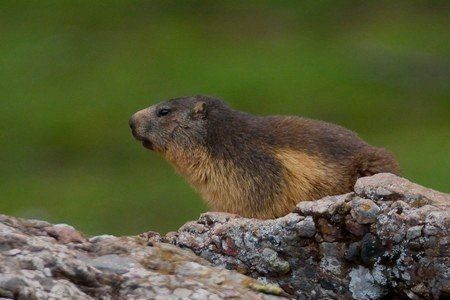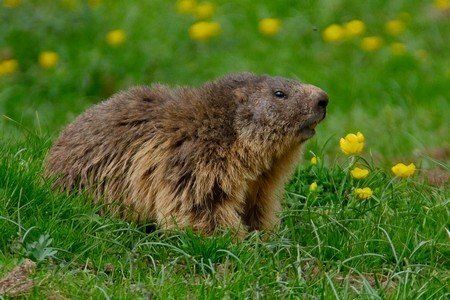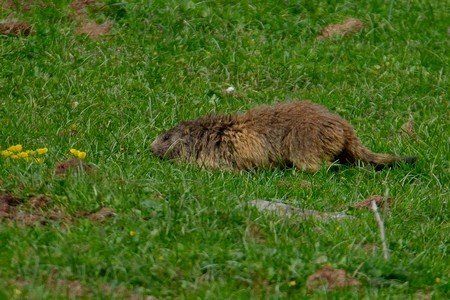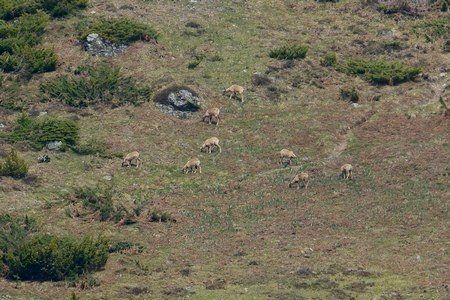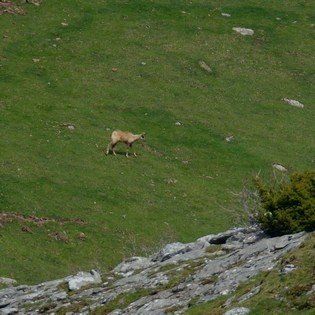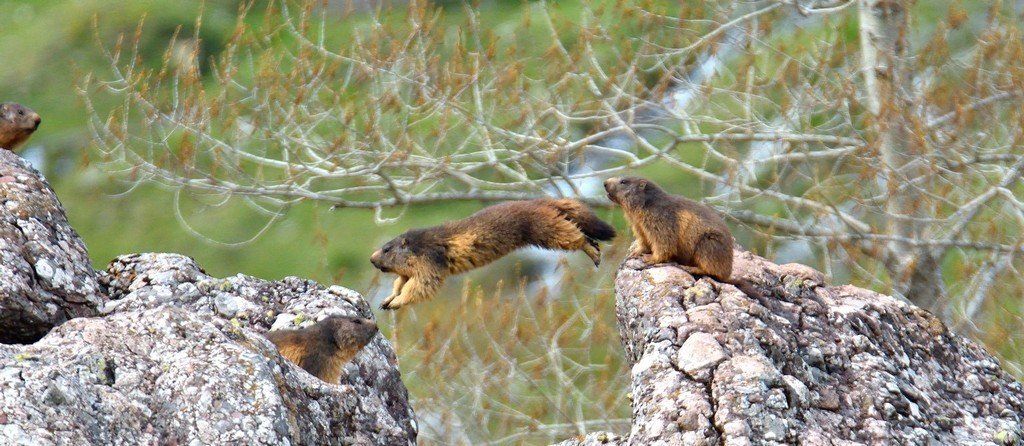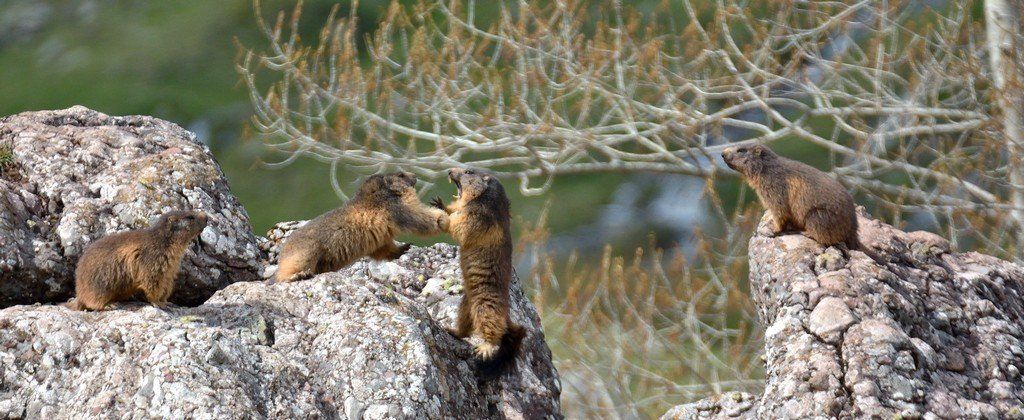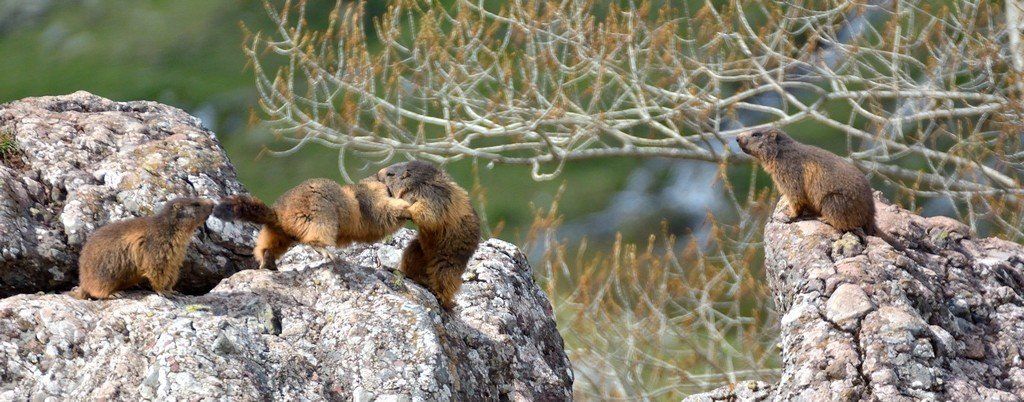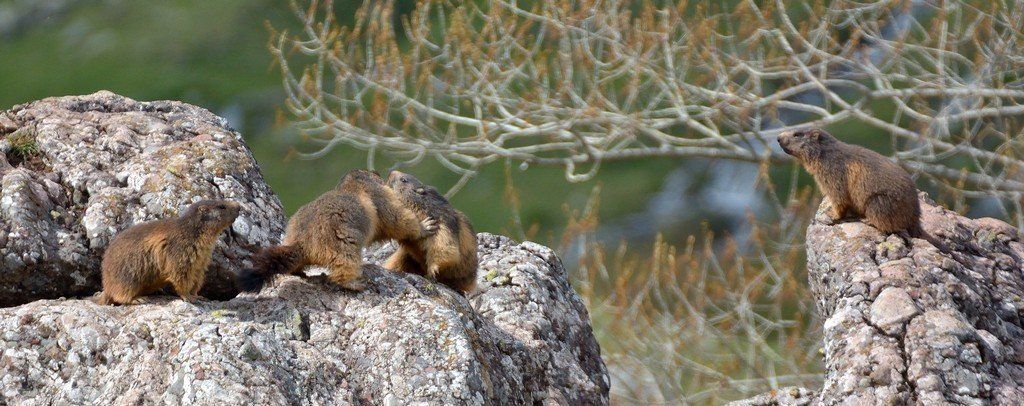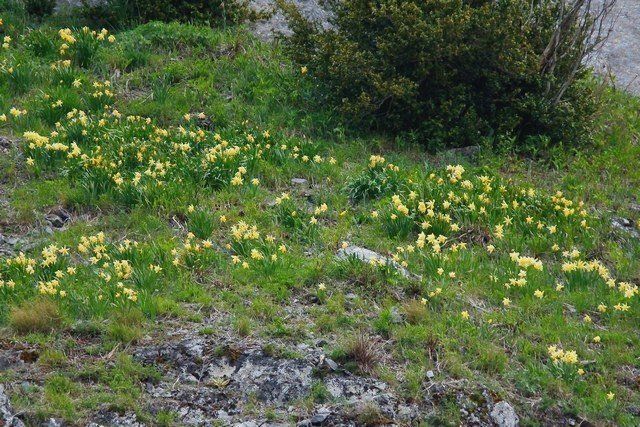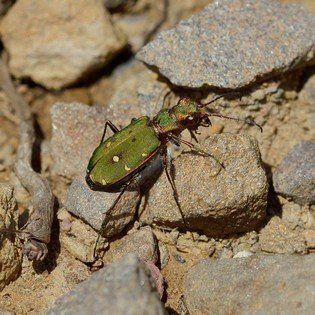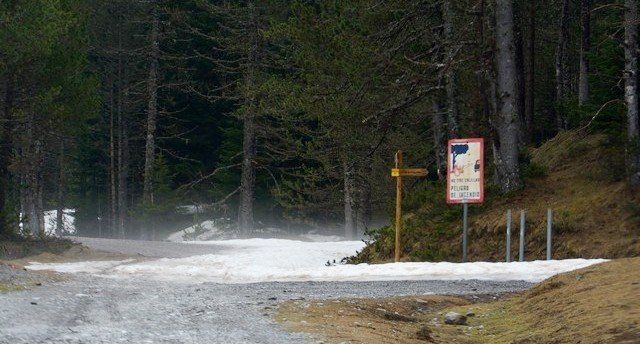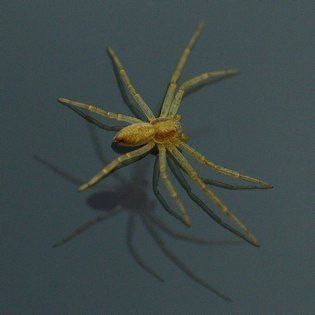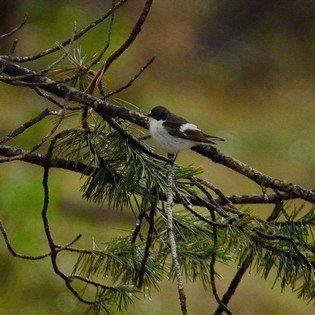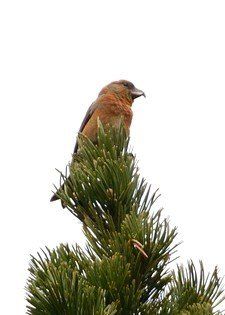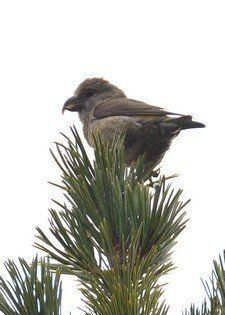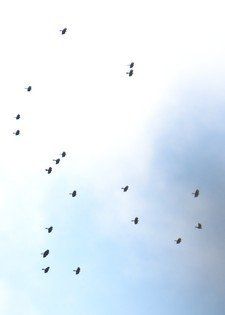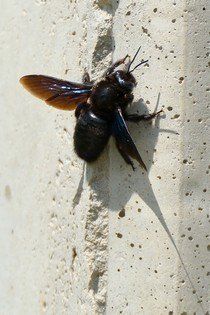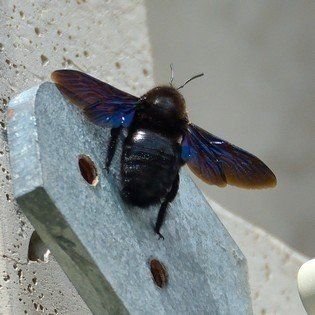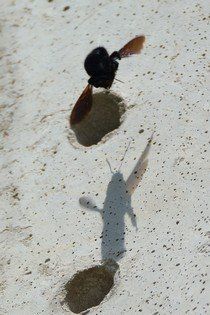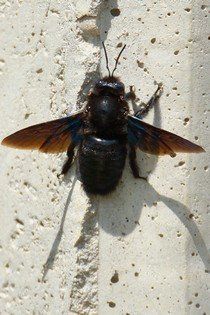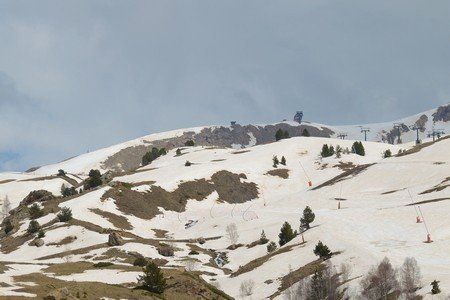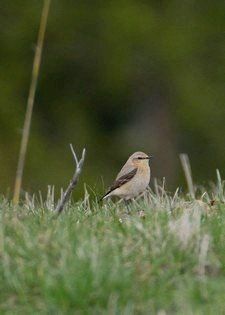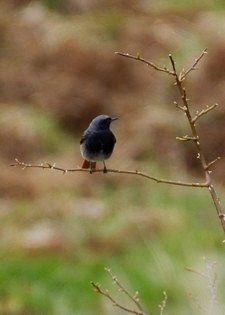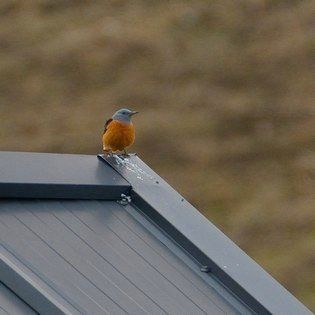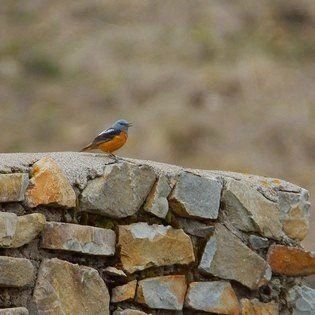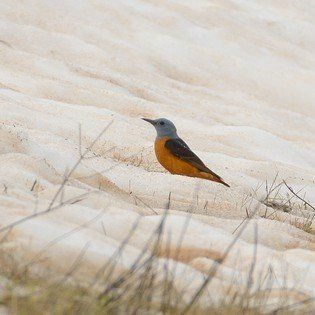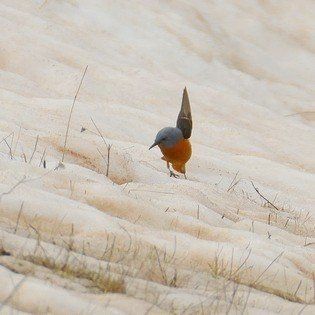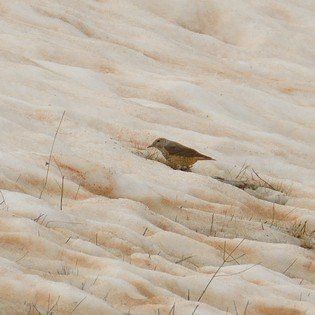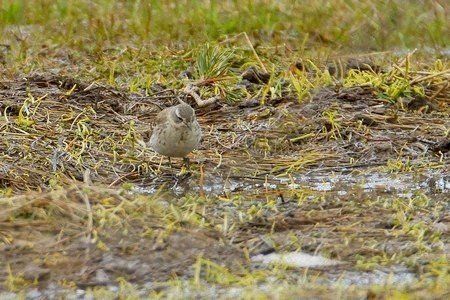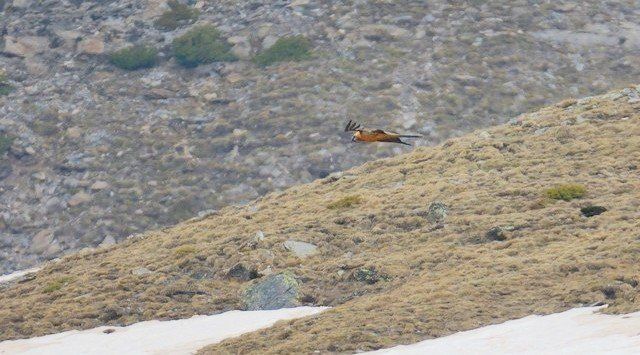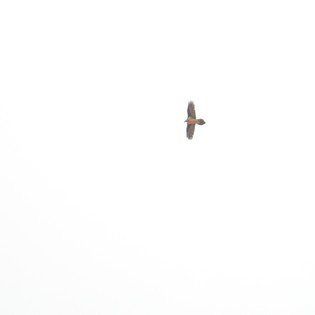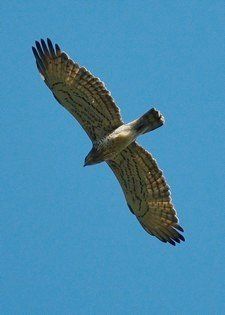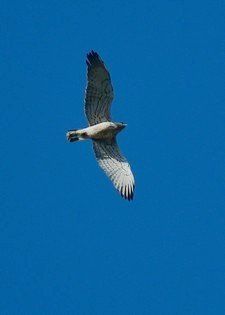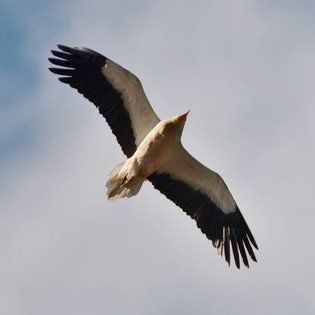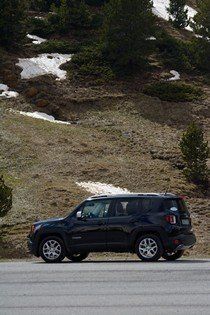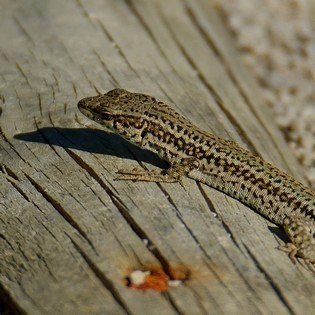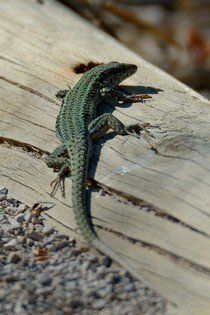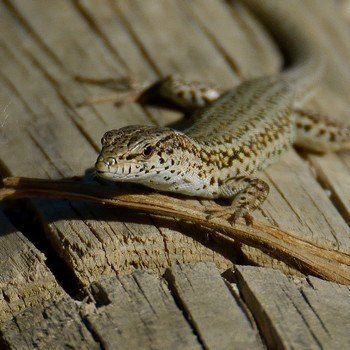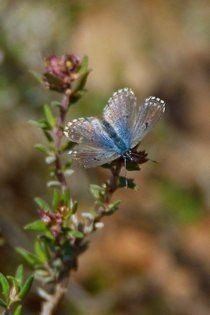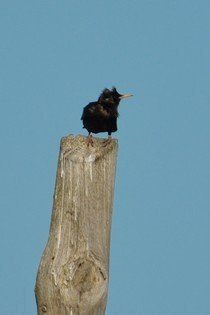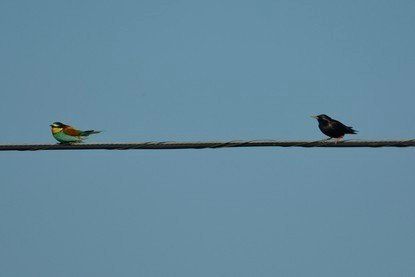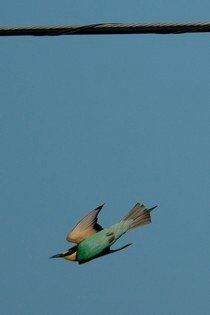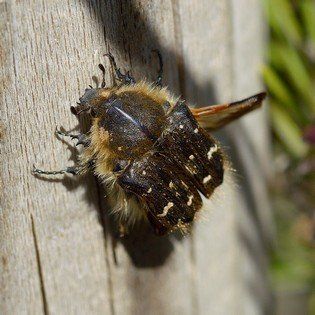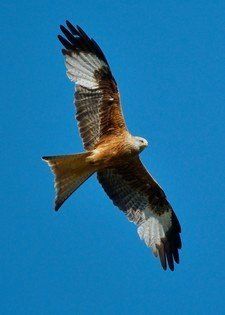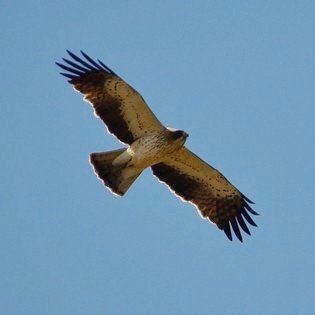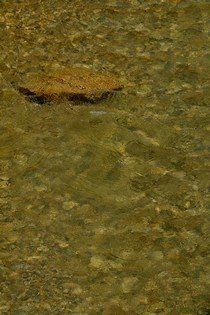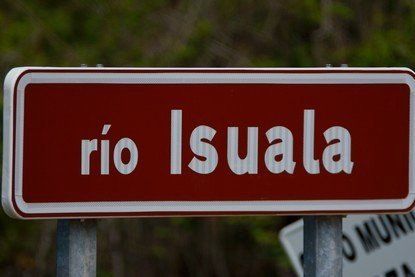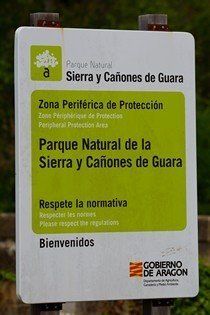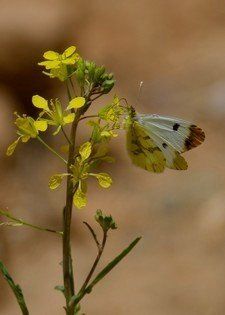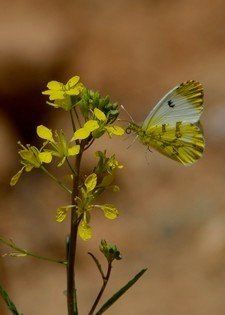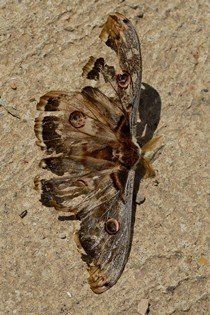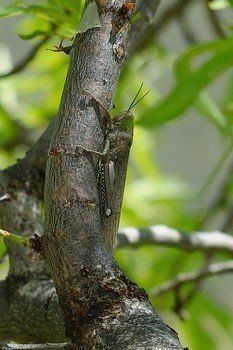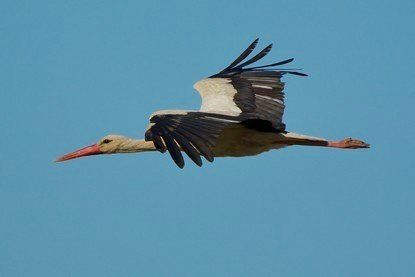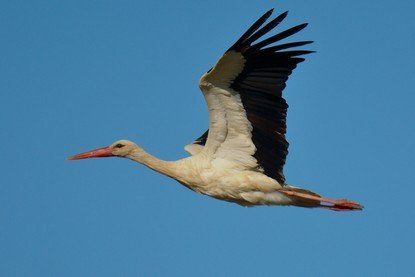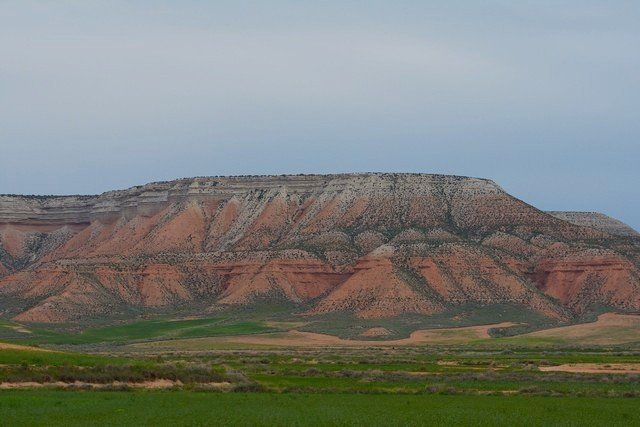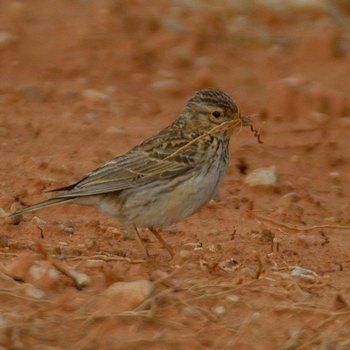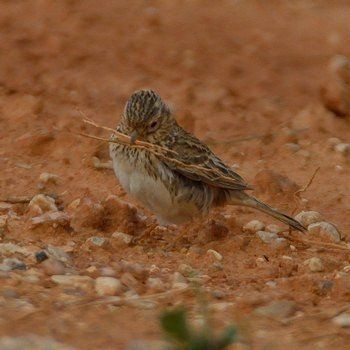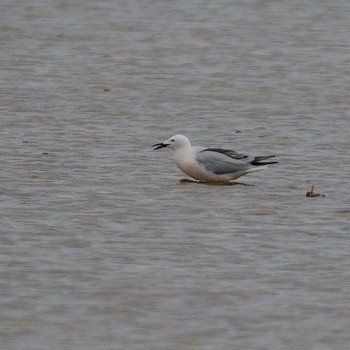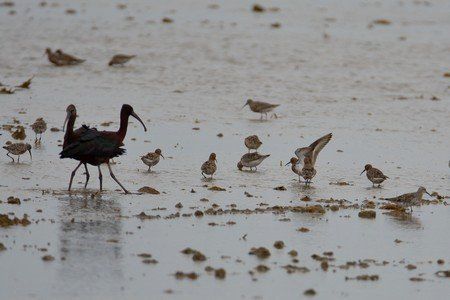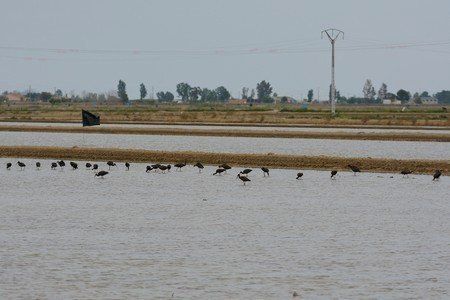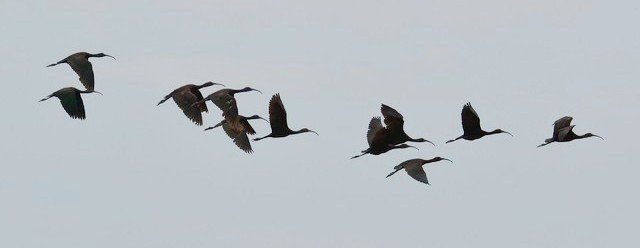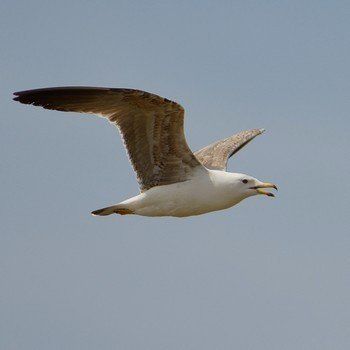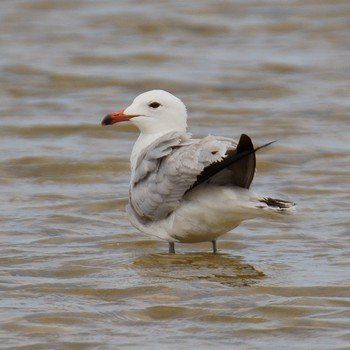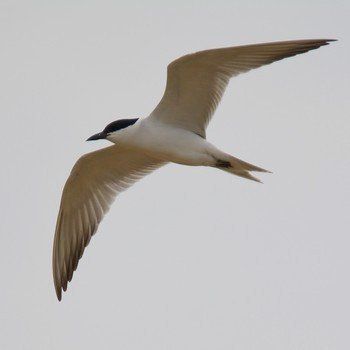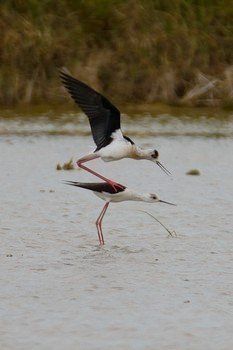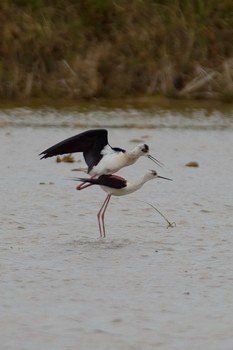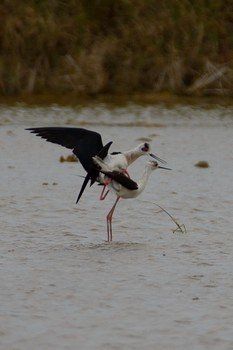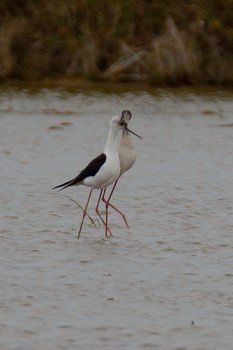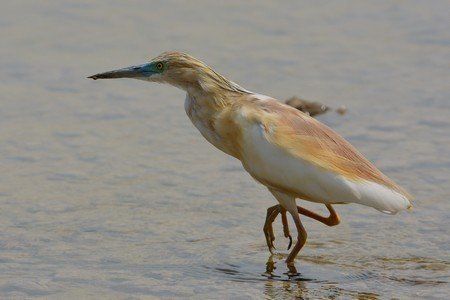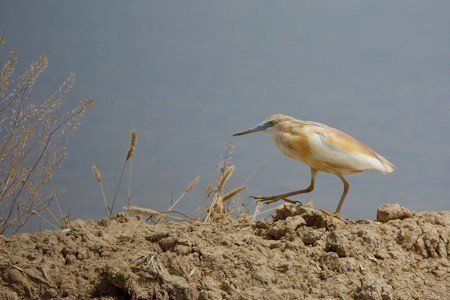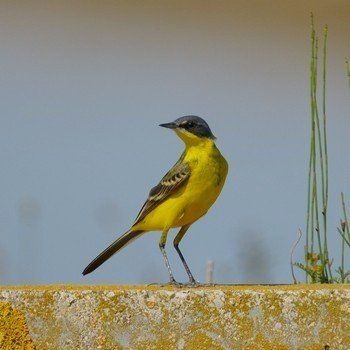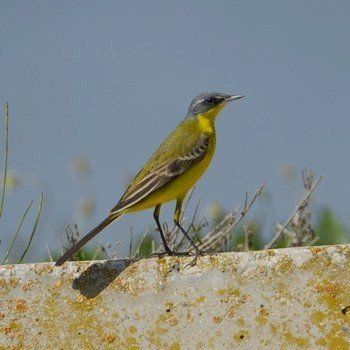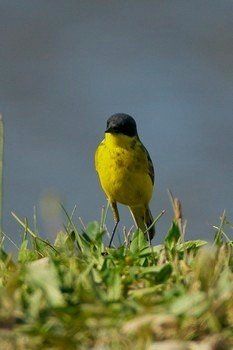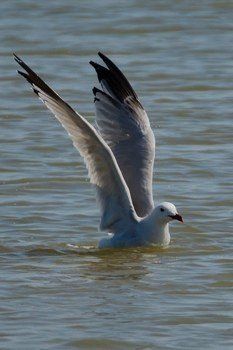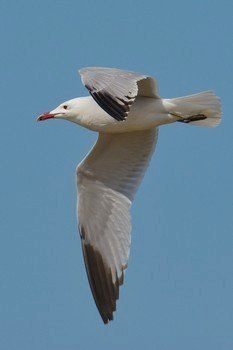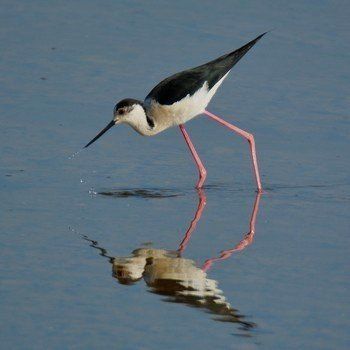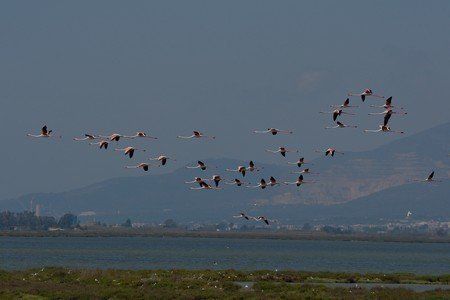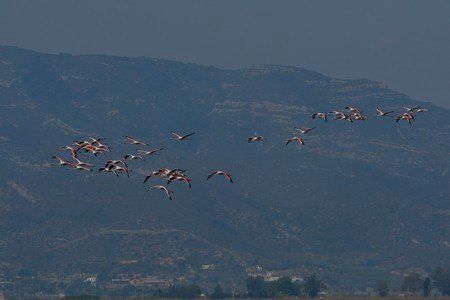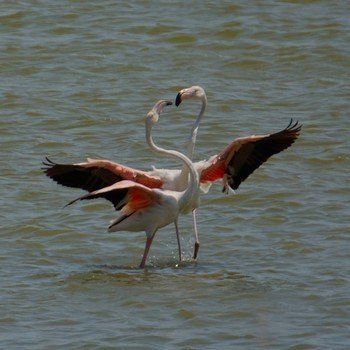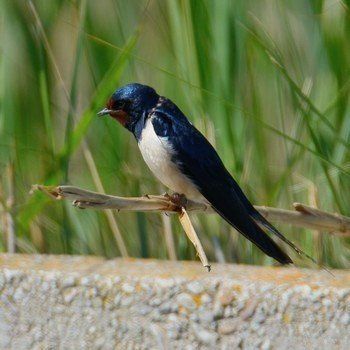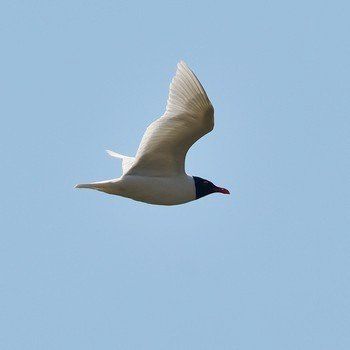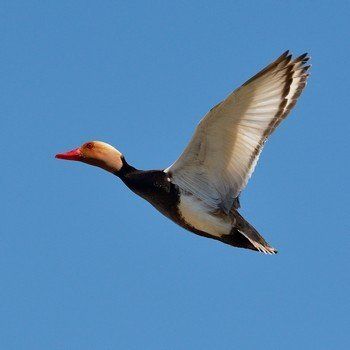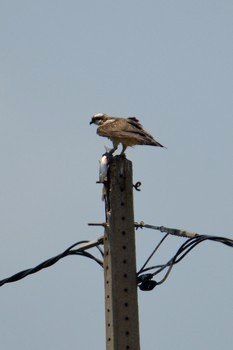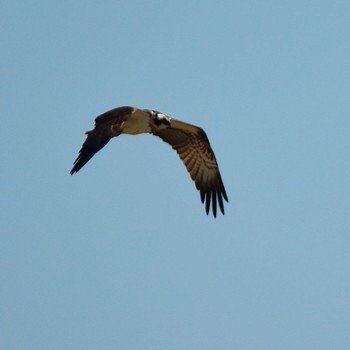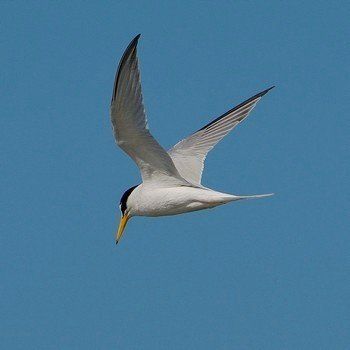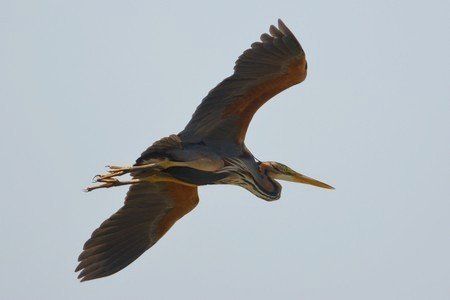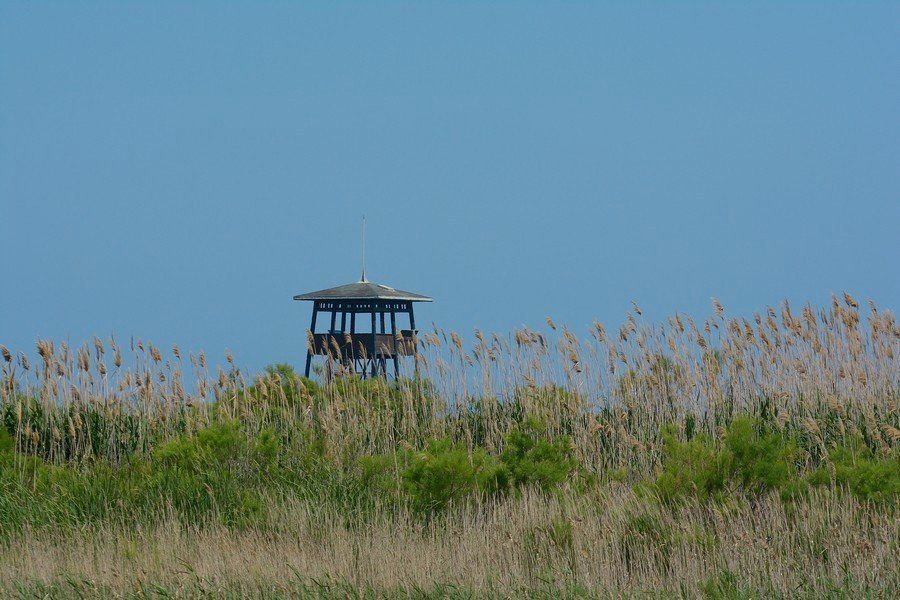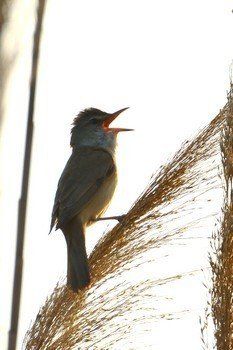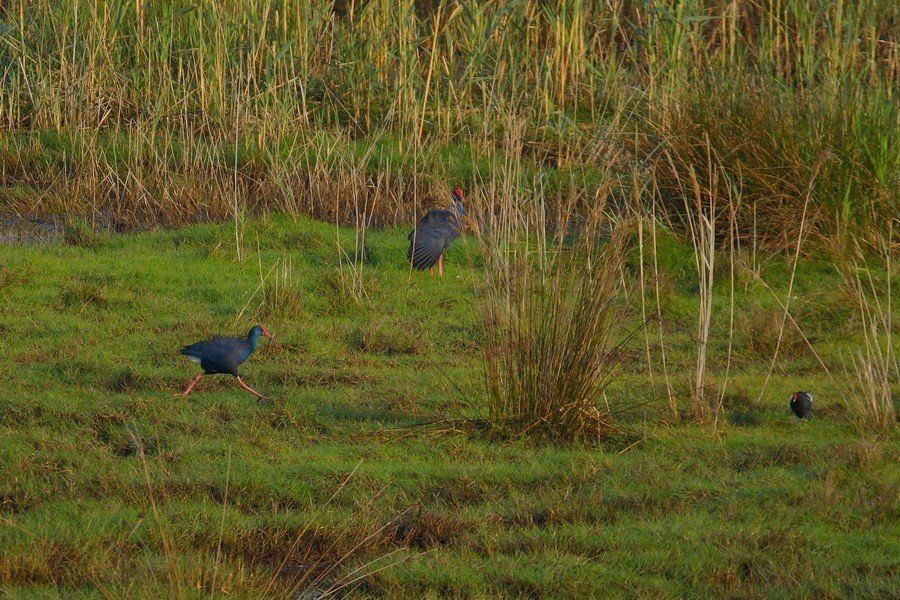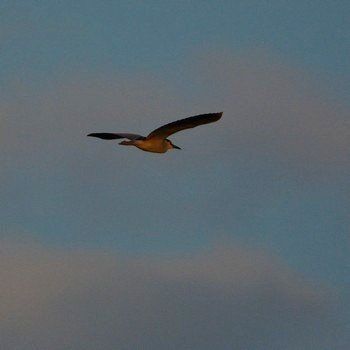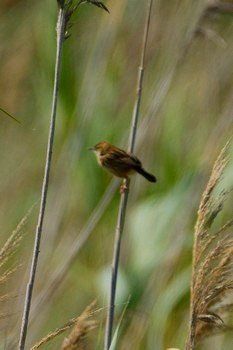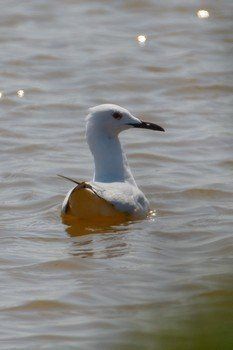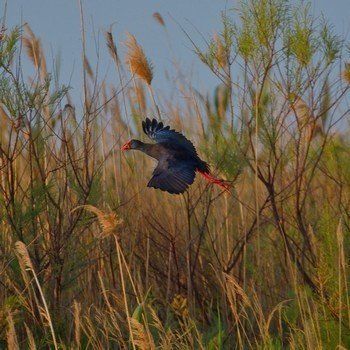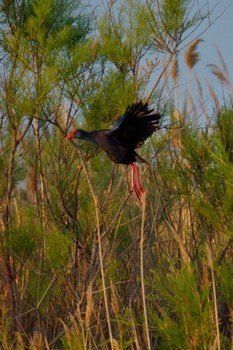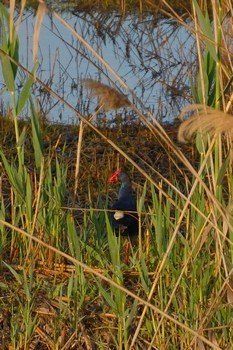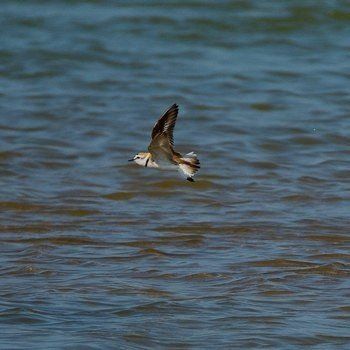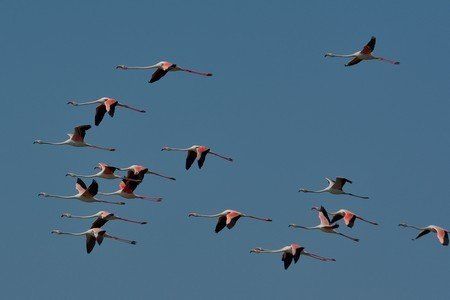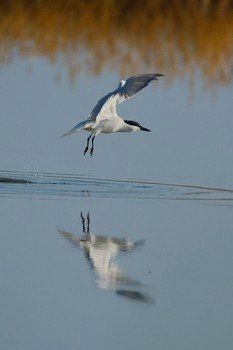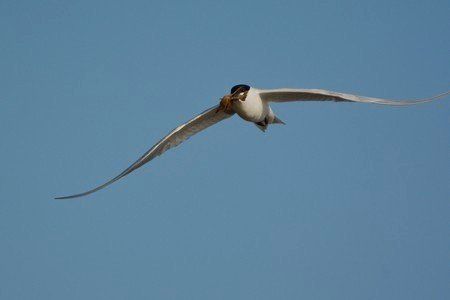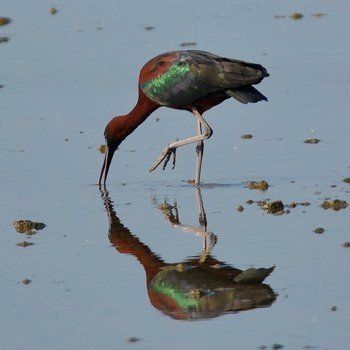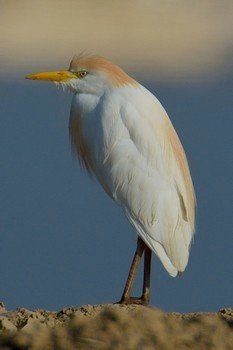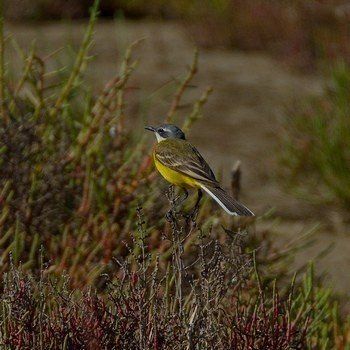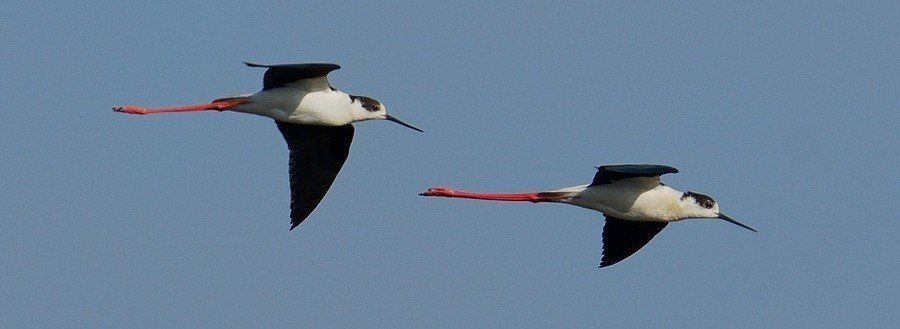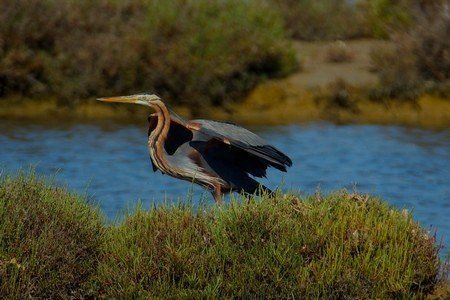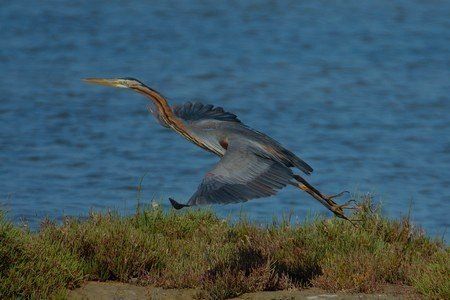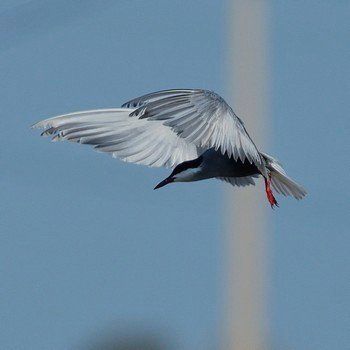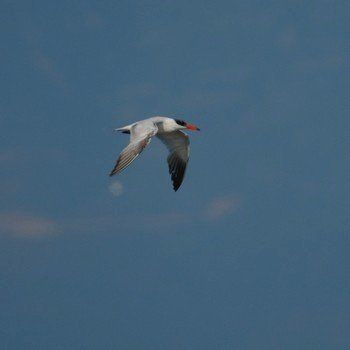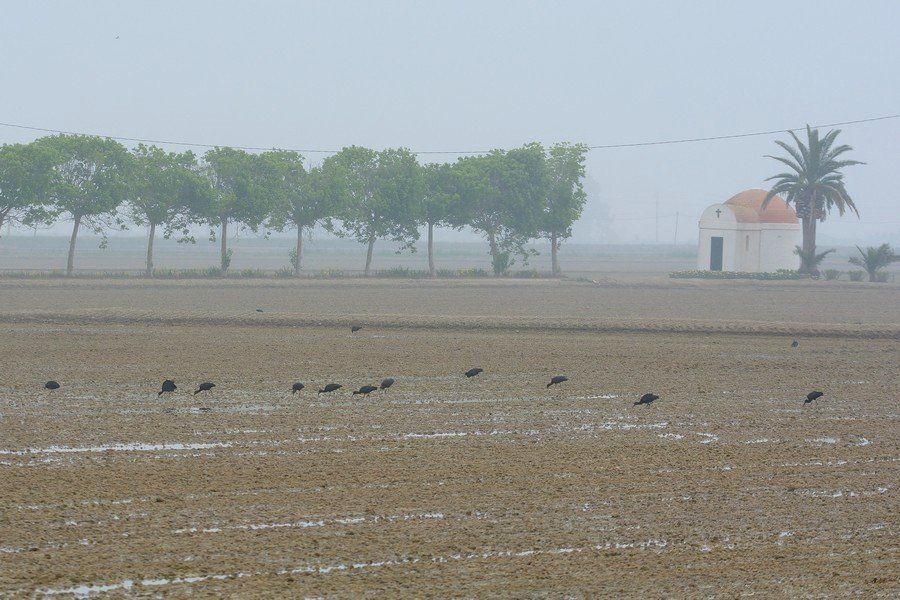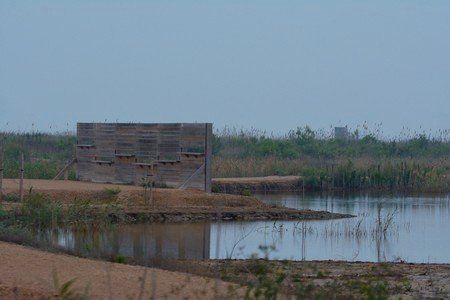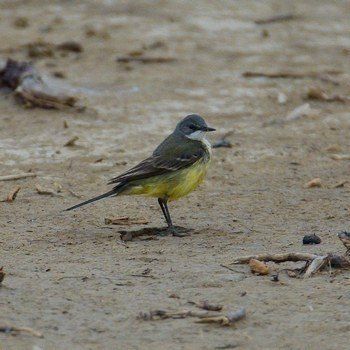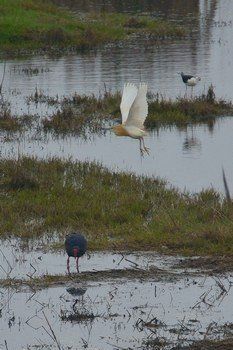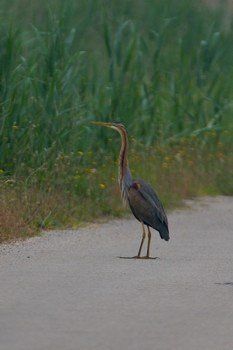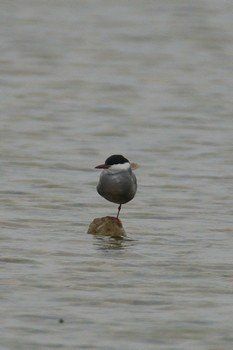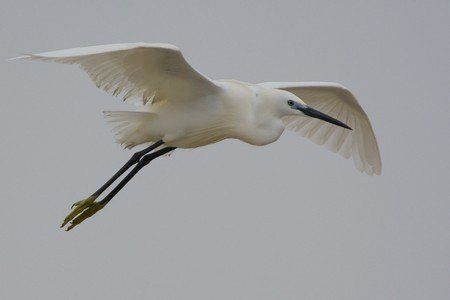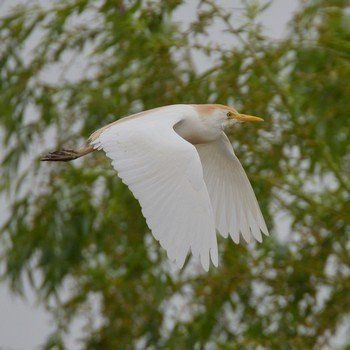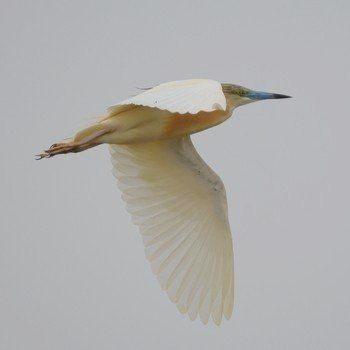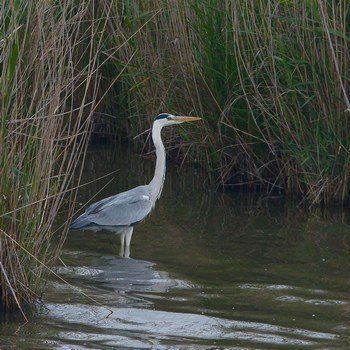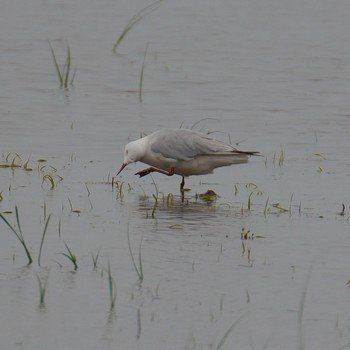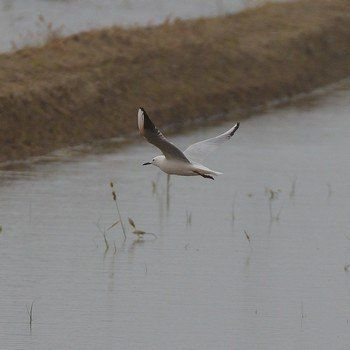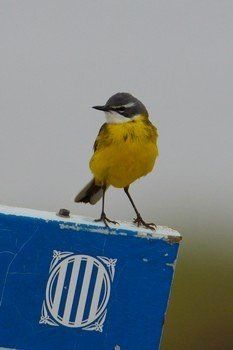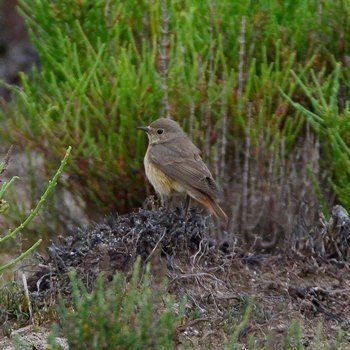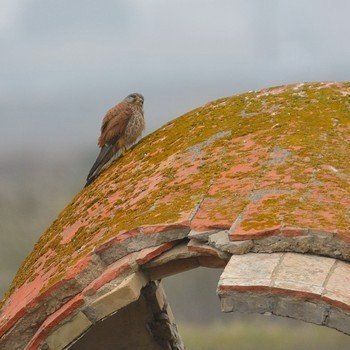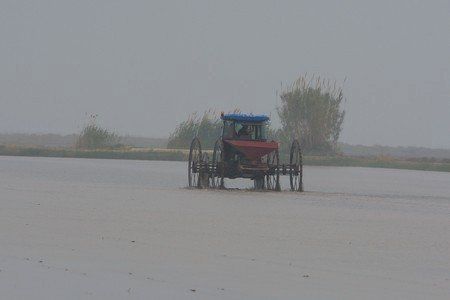Yet another Short-toed Eagle was seen along the A138 towards Salinas De Sin, ending another very productive, successful and enjoyable day. After some refreshments at the local bar we retired to bed, to spend our last night here, before heading in a southerly direction in the morning.
9th May
A Raven, 6 Griffon Vultures and a pair of Black Redstarts were seen before we left Salinas De Sin and headed out in the general direction of Ainsa.
The A1229 from Ainsa to Arcusa provided some interesting sightings, serenaded along the stretch of road by Nightingales, of which at least 30 were heard!
A route on minor roads was then taken in the general area of the Sierra De Guara, basically exploring anywhere that had a good Natural History potential.
Several Catalonian Wall Lizards Podarcis liolepis
were seen, mostly resting on pieces of wood and a good selection of birds were recorded including: Black Kite, Hoopoe, Golden Oriole, Barn Swallow, Crested Lark, House Sparrow, Stonechat, Yellowhammer, Willow Warbler, Carrion Crow, Cirl Bunting, Garden Warbler, Blackcap, Wren, Goldfinch, Woodlark and a Red Kite overhead were all good to see.
The area’s avian fauna continued with Stonechat, Northern Wheatear, Bee-eater, Cuckoo, Blackbird, Spotless Starling, Corn Bunting, Raven and ‘Common’ Swift before a ‘small broad-looking’ Lizard with a fast zigzagging gait ran across the road and into cover. What this lizard was is very difficult to determine, due to the briefness of the sighting, but could well have been a Gecko species.
A ‘Common’ Kestrel was then seen, followed by Corn Bunting, Short-toed Eagle, Linnet and 2 Red-rumped Swallows.
Now along the A2205, various stops found a variety of insects, including A Sand Wasp species, Ant species, Groundhopper species, Grasshopper species (with a red wing-flash, when it flew) and a faded Baton Blue Pseudophilotes baton.
Jason found a rather striking looking beetle on a post, which appears to be a Tropinota (Rose Beetle) species, but as with most of the insects found here, identification to species level is difficult.
Birds of prey continued to be seen with Griffon Vulture, Booted Eagle, Red Kite and a Common Buzzard. Turtle Dove, Alpine Swift and House Martin were also seen.
We then came upon a place along the A1230 where a bridge crossed the Rio Isuala, which was to be a very productive spot.
Nightingales sang here as did a Blackcap and Jason saw a Kingfisher over the clear turquoise running Rio.
A walk along the side of the Rio found a wide variety of insects, including Hummingbird Hawkmoth Macroglossum stellatarum
and a Cleopatra Gonepteryx cleopatra, both of which avoided having their photograph taken!
Booted Eagle, Griffon Vulture and Common Buzzard were seen overhead and the calls of Bee-eaters could be heard nearby. Somewhat of a surprise was the song of a Savi’s Warbler coming from the mountain side ‘rough scrub’ and Jason saw a Grey Wagtail along the river.
A Red-rumped Swallow passed over followed by the discovery Moroccan Orange-tip Anthocharis belia. More butterflies were found with an Adonis Blue Lysandra bellargus, Brimstone Gonepteryx rhamni
Western Dappled White Euchloe crameri, 2 Skipper species and a Fritillary species.
A Bee-fly species and A Large Psammodromus Psammodromus algirus
wrapped up a very enjoyable visit to this area both sides along the river.
At Santa Cillia, a large Moth was found dead. This was a Giant Peacock Moth Saturnia pyri. Although, it was good to see one of these impressive moths, the thought of seeing one living was far more desirable.
A large ‘Grasshopper’ was also found here in a tree, which after several attempts to photograph it precariously balanced on a fence resulted in images, which enabled it to be identified as an Egyptian Grasshopper Anacridium aegyptium. One of the recognisable field marks on this variable large grasshopper is the vertical black stripes down its eyes. A Violet Carpenter Bee was also seen here.
Corn Bunting, White Wagtail and Nightingale were also recorded here, before leaving Sant Cillia seeing Woodchat Shrike, Serin, Common Buzzard and Black Kite and hearing a Golden Oriole.
As we headed to our hotel for the night at Fuentes de Ebro, we stopped off at a Nature Reserve; Los Galachos Del Ebro.
Following the trails around the reserve, leading to a few hides, the reports on this reserve failed to live up to expectation. However, a bit of exploring found a few things of interest.
Coot, Moorhen, Mallard and Marsh Harrier suggested being back in Norfolk, but a Black Kite, White Stork, a brief rendition of Great Reed Warbler and Nightingale song, 2 Spotless Starlings, 2 Bee-eaters, Common Swift and Barn Swallow were enough to underline a more Mediterranean terrain! Catalonian Wall Lizard Podarcis liolepis
and several Blue-tailed Damselflies Ischnura elegans
added to the fauna.
At Fuentes de Ebro, 6 Cattle Egrets were seen, a Black Kite and a White Stork’s nest, before finding our rearranged accommodation (after some flooding to the previous designated hotel!) at Hotel Texas Fuentes de Ebro, which Jason described as a ‘truck-stop’!
Still, a few beers and a meal (where Jason actually ate a food item consisting of cheese, which he hates and will not eat!?) in the bar and dining room were reasonable enough and I had a comfortable night in the room provided. However, Jason unfortunately did not experience the same and was up for most of the night due to a barking dog in the adjacent apartment and general noise. He told me the following morning that he was hoping I would knock on his door, suggesting an early start to Belchite, after experiencing similar, but I hadn’t called round!
10th May
The Belchite Plains were our destination today and despite the overcast and windy conditions our expectations were high, but tempered with caution; remembering a passage from the Crossbill Guide to the Spanish Pyrenees, which suggested the original habitat was not the same anymore!
Two Bee-eaters were good to see, as was a Rabbit, but birds were far from obvious and it soon became apparent that the significant change from the original plains to agriculture had taken its toll.
However, we pressed on exploring every accessible track and were finally rewarded by the unique song of a Dupont’s Lark. Despite considerable effort we could not actually see the lark, but at least we had recorded it for the area.
A Lesser Short-toed Lark was seen out on a sandy track, collecting nest material and a Calandra Lark was also seen and heard singing, but the apparent abundance of lark species was not apparent on this particular day, if indeed the numbers cited still exist here in this changed and changing landscape.
A Common Kestrel, 3 Red-legged Partridges and Swallows winging their way across the area followed.
Two Ravens were seen before heading out along the CP09, where a Fox crossed the road. 3 Collared Doves and a Black Kite were seen as we headed (earlier than planned, after deciding to ‘cut our losses’) for the Ebro Delta.
We were staying at an apartment in Deltebre, which was more than adequate for our requirements, with a huge TV, not that there was anything really to watch and indeed our time here was for other activities.
An exploration of the immediate area ensued, which was basically some extra time here (resulting from the short time period spent at Belchite) driving along the accessible tracks and roads that crossed the rice paddy fields. If the next two days here were anything like what the afternoon provided we were in for a treat!
One of the first birds we saw was a new species for us both; a Slender-billed Gull, flying over the paddies. Approximately 50 Curlew Sandpipers and 150 Glossy Ibis were seen, followed by Black-winged Stilt and both a Cattle and Little Egret.
The weather conditions were still very overcast and we hoped we would have better light during the next two days in order to see these species in their full glory and to photographically record better images. Still, there was so much to see and places to explore, some cloudy weather was not about to thwart our progress!
2 Turtle Doves, Gull-billed Tern, Yellow-legged Gull and Mallard were added to the Ebro species list, as was our first Audouin’s Gull here. Black-headed Gull, House Sparrow, Spotless Starling, Collared Dove and a Whiskered Tern and mating Black-winged Stilts were all seen as we followed the tracks, stopping at various points.
The sun began to appear through the clouds and Common Swifts were overhead and a Common Sandpiper and a Grey Heron followed. Herons were very much in evidence here but I was not expecting to see 3 Squacco Herons during our first visit (one catching a Crayfish sp.) and a Purple Heron were then added to the heron count.
Lesser Black-backed Gull, Greenshank, Coot, Magpie were seen before driving alongside an irrigation channel, now in the sunshine.
At the very least were 500 Sand Martins hunting insects over the water courses and 20-30 Yellow Wagtails were feeding along the bank. The majority of the Yellow Wagtails found here suggest the race Motacilla flava thunbergi
with at least one M.f. feldegg. However, polymorphic species, such as the flava wagtails are very variable.
6 Little Ringed Plovers, 2 Common Sandpipers and a Wood Sandpiper were spotted before a Great White Egret completed the ‘egret hat-trick’.
Two more Squacco Herons were seen in the late afternoon before having a look near the river, where several Blue-tailed Damselflies were found.
More time was spent photographing many of the species already encountered, now in the sunshine; a great introduction to the Ebro Delta’s wildlife.
After a shower, we found a nice little restaurant and after a few beers (coffee in Jase’s case) and a good meal we returned to our apartment, looking forward to the following day.
11th May
The day dawned and we continued our exploration of the Ebro Delta, with the first birds being Black-winged Stilt, Glossy Ibis and 3 Squacco Herons in flight together! 2 Little Ringed Plovers, Whiskered Tern and an Audouin’s Gull bathing followed.
The area was also great for Flamingos with flocks of Greater Flamingos flying over the delta with the mountains as a backdrop.
A nesting colony, of Audouin’s Gulls was here and a Barn Swallow posed for photos, whilst Greater Flamingos flying across the sea made for some great images. Red Crested Pochard was also seen and more and more opportunities to see and indeed photograph Greater Flamingos were presented to us.
A Mediterranean Gull flew over, a Grey Heron was seen and both male and female Black-tailed Skimmers were found. A Purple Heron and more Black-winged Stilts and Greater Flamingos were seen and a Common Tern hovered over the water in its search for food.
A Crested Lark was seen along one of the dusty tracks and I then noticed a large bird perched on some telegraph wires; an Osprey. The Osprey caught a fish, which looked like a Mullet and then proceeded to consume it whilst perched on a telegraph pole. A Common Sandpiper was seen during the Osprey observation and more photo opportunities followed with a Purple Heron, a hunting Little Tern and more flamingos!
A nesting colony of Common Terns was viewed from behind a viewing screen and also here were Avocet and Shelduck before arriving at an observation tower, overlooking the marshes.
Gull-billed Tern were here along with singing Reed and Great Reed Warblers, a calling Common Cuckoo and the most Purple Gallinules I have ever seen in view at the same time; at one point there must have been at least six!
A Night Heron flew over and there were brief views of a Little Bittern, whilst a Great White Egret searched for prey and Cattle Egrets added to the Herons present.
A Chiffchaff was in the bushes and so was a Zitting Cisticola before spotting 2 Slender-billed Gulls on one of the lagoons.
Green Sandpiper, Crested Lark, 2 Yellow-legged Gulls, Woodchat Shrike and Spotted Flycatcher were also recorded in the area, before paying a visit to the beach, where a Sanderling, Gannet and a Sandwich Tern flew past over the sea.
A Snail species was found on the way back from the beach (once more in the area of the tower) and a Purple Heron was walking along the road!
Kentish Plover, Savi’s Warbler, Hoopoe, Little Grebe, Great Crested Grebe, Gadwall, 2 Mediterranean Gulls, White Stork, Turtle Dove were all encountered on the return journey, plus more wonderful views of a Purple Gallinule; in flight and another being chased off by a Coot!
A Gull-billed Tern was seen carrying a Crayfish sp. and some more great views of Little, Squacco and Cattle Egret, Purple and Grey Heron, Glossy Ibis, Audouin’s Gull, Crested Lark, Black-winged Stilt, Greater Flamingo, Yellow Wagtail Motacilla flava iberiae
Kentish Plover, Yellow-legged Gull, Common and Whiskered Terns and a Caspian Tern all lit up nicely in the sunshine. Another great day at the Ebro!
12th May
The seventh and final day of our visit to Spain was again spent in the Ebro Delta, before heading towards the airport for our flight back to the UK.
The day began with 30 Glossy Ibis together, Whiskered Tern, Black-winged Stilt, Mallard, Coot, Audouin’s Gull and Gull-billed Tern.
Some of the egret contingent followed, with Squacco and Purple Herons and Little Egret and both Great Reed and Reed Warblers were singing near the area known as Bassa de L’Alfacada with the screen to observe the nesting Common Terns.
Shelduck and Avocet were once again present here, a Yellow Wagtail possibly Motacilla flava cinereocapilla
was collecting nest material and a Crested Lark was also seen. On the way to the tower, 3 Red Crested Pochard flew over.
Once again from the tower, there were at least 8 Purple Gallinules out on the marsh and Great White Egret, Zitting Cisticola and Greater Flamingo were also seen. A Night Heron flew over and a Squacco Heron was out on the marsh.
Yellow-legged Gull, Yellow Wagtail sp., Black-winged Stilt and Whiskered Tern followed and it was a problem knowing where to look (never mind where to point the camera!), with so many ‘Mediterranean species’ on show.
3 Slender-billed Gulls were seen before leaving the tower and a Purple Heron was on the road again!
Once more amongst the rice paddies a Cattle Egret, Great White and Little Egrets were encountered, as were 10 Ringed Plovers, 6 Little Stints and a Common Redshank and a Slender-billed Gull posed for photos as it preened.
Sand Martins were settling on the road, House Sparrows were around the buildings and Northern Wheatear, 3 Spotted Flycatchers and a handsome Iberian Yellow Wagtail M.f iberiae
perched on top of a sign were seen.
At the Salines de la Tancada, Little and Whiskered Terns were present and of course Greater Flamingos. Savi’s Great Reed and Reed Warblers were all heard singing, as was a Zitting Cisticola.
A female Common Redstart gave us another avian species for the trip, before bidding farewell to the Ebro Delta and heading back to drop the jeep off at the car hire, before being taken to Barcelona Airport and our flight back to the UK.
An absolutely wonderful seven days in North and East Spain and great thanks are due to my friend Jason who booked the trip, did all of the driving and was great company. Also, thanks to Ken Saul for his help with the Moth identification and Mike Linley and David Donaire for their invaluable aid in identifying the Lizard species seen.

